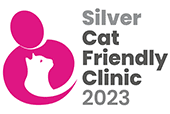 Summer has arrived and we’re seeing the usual flurry of cases of fly strike in rabbits. Fly strike (proper name myiasis) is an extremely distressing condition for the affected rabbit and can be very challenging to treat. Due to a variety of possible reasons, the rabbit’s perineal area (back end underneath the tail) becomes contaminated with urine or faeces. In the summer months, this will attract flies – especially bluebottles and greenbottles. They lay their eggs in the contaminated fur and when these hatch out the maggots infest the rabbit and literally start eating them alive. It is a dreadful condition and still so common. Healthy rabbits do not get fly strike. There is always an underlying reason for the urine and faecal soiling of the perineum. The most common underlying reasons are diseases that stop the rabbit from grooming itself normally. These include dental disease, inappropriate diet, obesity and spondylosis (spinal arthritis), other forms of arthritis and sore hocks. Normally food passes through a rabbit’s digestive tract twice. The first passage of food through the digestive tract does not produce the typical firm hard pellet that we associate with rabbit droppings. Instead a soft, sticky capsule of material called a caecotroph is produced. A healthy rabbit on an appropriate diet will eat these directly from its anus- a process known as caecotrophy. Although it sounds revolting it is vital that the rabbit performs caecotrophy. Otherwise, they do not obtain all the nutrients from their food and their back ends becoming caked in soft faeces that are ideal for flies to lay maggots on. Caecotrophs are produced several hours after feeding when the rabbit is quiet and undisturbed. This is usually at night time for a domesticated rabbit and hence caecotrophs are sometimes called “night faeces”. The term coprophagia is still used by some people to describe the process of caecotrophy but this is not strictly accurate as coprophagia strictly means eating waste products such as dung and faeces – caecotrophs are rich in vital nutrients for the rabbit so are not waste products. Once caecotrophy has been perfomed, they pass through the digestive tract for the second time and then hard pellets are passed by the rabbit. These will not stick to the fur. Coming up in the next “The Vet Says…”; what steps can an owner take to prevent fly strike in their rabbit?
Summer has arrived and we’re seeing the usual flurry of cases of fly strike in rabbits. Fly strike (proper name myiasis) is an extremely distressing condition for the affected rabbit and can be very challenging to treat. Due to a variety of possible reasons, the rabbit’s perineal area (back end underneath the tail) becomes contaminated with urine or faeces. In the summer months, this will attract flies – especially bluebottles and greenbottles. They lay their eggs in the contaminated fur and when these hatch out the maggots infest the rabbit and literally start eating them alive. It is a dreadful condition and still so common. Healthy rabbits do not get fly strike. There is always an underlying reason for the urine and faecal soiling of the perineum. The most common underlying reasons are diseases that stop the rabbit from grooming itself normally. These include dental disease, inappropriate diet, obesity and spondylosis (spinal arthritis), other forms of arthritis and sore hocks. Normally food passes through a rabbit’s digestive tract twice. The first passage of food through the digestive tract does not produce the typical firm hard pellet that we associate with rabbit droppings. Instead a soft, sticky capsule of material called a caecotroph is produced. A healthy rabbit on an appropriate diet will eat these directly from its anus- a process known as caecotrophy. Although it sounds revolting it is vital that the rabbit performs caecotrophy. Otherwise, they do not obtain all the nutrients from their food and their back ends becoming caked in soft faeces that are ideal for flies to lay maggots on. Caecotrophs are produced several hours after feeding when the rabbit is quiet and undisturbed. This is usually at night time for a domesticated rabbit and hence caecotrophs are sometimes called “night faeces”. The term coprophagia is still used by some people to describe the process of caecotrophy but this is not strictly accurate as coprophagia strictly means eating waste products such as dung and faeces – caecotrophs are rich in vital nutrients for the rabbit so are not waste products. Once caecotrophy has been perfomed, they pass through the digestive tract for the second time and then hard pellets are passed by the rabbit. These will not stick to the fur. Coming up in the next “The Vet Says…”; what steps can an owner take to prevent fly strike in their rabbit?
Please click here to view the latest information on how to access our services.





